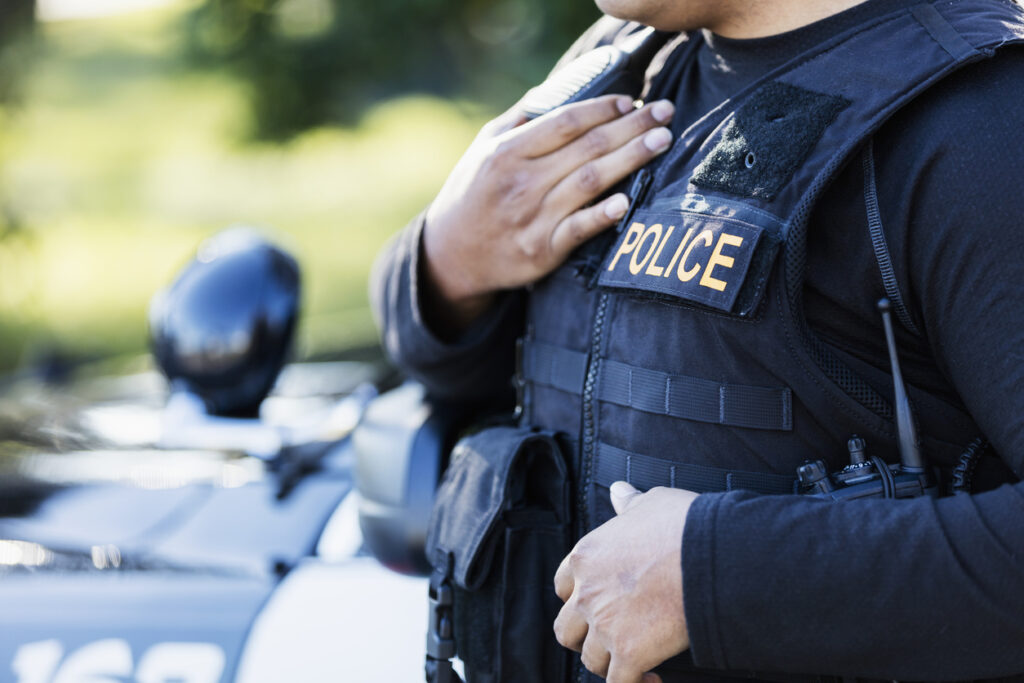Today is National Law Enforcement Appreciation Day. We would be truly remiss if we didn’t acknowledge this day as our roots began with Blue Line Coaching. While we support all our first responders and their supporters and families, today and this month we emphasize law enforcement appreciation.
Law Enforcement Then and Now
Law enforcement has changed significantly from its start to what we have now, but you might be surprised to learn how young the official field is.
How Law Enforcement Started
Our modern system of policing isn’t quite 200 years old yet. In the early days, the country used a “night watch” with unreliable volunteers since 1635 which started officially in Boston. In 1789, The US Marshals began with President George Washington creating 13 Marshals. The Texas Rangers began in 1835 and is still the longest-running law enforcement agency in the country. Then, in 1838, Boston created the first publicly funded police force with the hopes of protecting goods coming in on ships. In 1857, Baltimore issued pistols to its officers. One year later, Boston and Chicago issued uniforms.
As things progressed, ugliness continued in the country. Many groups in the South focused on persecuting African Americans. While slavery was abolished, racism still thrived. In 1870, Constable Wyatt Outlaw of North Carolina was the first African American officer killed by members of the KKK when he was dragged from his home and lynched in front of the courthouse.
Law Enforcement into the 20th Century
In 1891, Health Inspector Marie Owens became the first female sworn-in officer and worked in the Detective Bureau. In 1902, departments started using fingerprinting. 1909 was the last year in US history that fewer than 100 officers were killed in the line of duty. Berkley, CA was the first city to have all its officers use automobiles in 1914. Betty Blankenship and Elizabeth Robinson of Indianapolis were the first female police officers in the US to work as patrol officers on the street. In 1984, President Ronald Reagan authorized the Law Enforcement Officers Fund for a memorial in Washington, DC to honor officers who died in the line of duty.
The history of policing has been marked by many stories, good, bad, and ugly, but the drive to improve safety and reliability has not ceased. Even today, amidst prejudice and corruption, hundreds of thousands of officers are working to make their communities a better place.
Law Enforcement Stats Today
There are so many more points in the history of law enforcement in America, but too many to note in this short writing. Instead, let’s look at where we are today on Law Enforcement Appreciation Day by reviewing some stats put out by the National Law Enforcement Memorial Fund.
- 800,000 sworn-in officers serve in the US today
- 12% of those officers are female
- There have been more than 23,000 officers killed in the line of duty (on record)
- The New York City Police Department has the most recorded line-of-duty deaths for a city at 1,038
- Texas has the highest recorded line-of-duty deaths of any state at 1,981
- Vermont has the fewest deaths at 25
- September 11, 2001, was the single deadliest day in law enforcement history with a recorded 72 deaths of officers
- There have been 43,649 recorded official assaults against officers across the country
Why We Appreciate Law Enforcement
Not everyone appreciates what our LEOs do every day. For sure, some incidents and people mar the image of law enforcement. But we know the struggle that the good guys take up daily, despite opposition. We appreciate our LEOs and their families. They bear a weight with those badges others simply cannot understand. Their spouses carry a weight. Their children carry a weight.
While we move about our lives, going to and from work, school, and errands, our law enforcement is maintaining our safety, answering calls, and helping those in need. Whether they’re working as a school resource officer or chasing down a suspect, they always face risk in their jobs. Sometimes, that risk is more dangerous, even life-threatening, but still, they serve.
How to Show Law Enforcement Appreciation
Would you like to know what you can do to show law enforcement appreciation in your hometown? Here are some ideas.
- Write a note or letter of thanks. You can do this physically and mail or hand it to your local department. You can also send an email letting them know how much you appreciate their service.
- Donate to a LEO charity. Most local departments will have specific charities they partner with, but you can also donate to a LEO charity like the National Police Foundation, Project K9 Hero, or any of these great charities.
- Say “thank you” to any police officer you see. Sometimes an in-person “thank you” can really brighten a day.
- Wear blue to support the Thin Blue Line.
- Turn on a blue light or display a Blue Line flag.
Thank You to All Our Blue Families
We want to thank all our Blue families for their sacrifice, their support, and their commitment to keeping our communities safe. We see you, we hear you, and we appreciate you. Please know that if you need anything, FRC is here for you. Please don’t hesitate to reach out.
